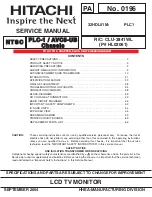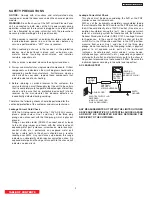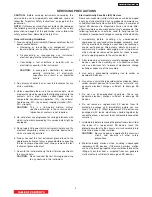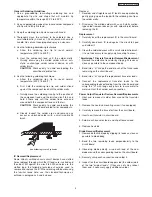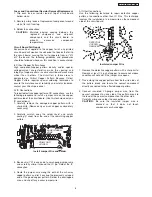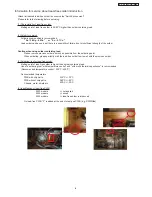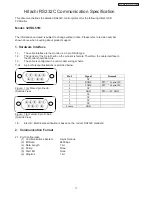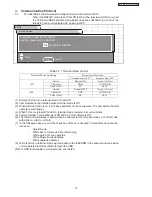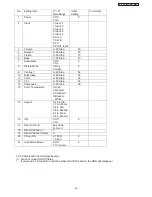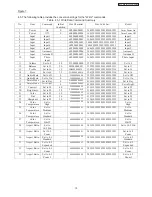
6
PLC1/AVC5-UB
Fuses and Conventional Resistor Removal/Replacement
1. Clip each fuse or resistor lead at top of circuit board
hollow stake.
2. Securely crimp leads of replacement component around
stake 1/8 inch from top.
3. Solder the connections.
CAUTION:
Maintain original spacing between the
replaced component and adjacent
components and the circuit board, to
prevent excessive component
temperatures.
Circuit Board Foil Repair
Excessive heat applied to the copper foil of any printed
circuit board will weaken the adhesive that bonds the foil to
the circuit board, causing the foil to separate from, or “lift-
off,” the board. The following guidelines and procedures
should be followed whenever this condition is encountered.
In Critical Copper Pattern Areas
High component/copper pattern density and/or special
voltage/current characteristics make the spacing and
integrity of copper pattern in some circuit board areas more
critical than in others. The circuit foil in these areas is
designated as Critical Copper Pattern. Because Critical
Copper Pattern requires special soldering techniques to
ensure the maintenance of reliability and safety standards,
contact your Hitachi personnel.
At IC Connections
To repair defective copper pattern at IC connections, use the
following procedure to install a jumper wire on the copper
pattern side of the circuit board. (Use this technique only on
IC connections.)
1. Carefully remove the damaged copper pattern with a
sharp knife. (Remove only as much copper as absolutely
necessary.)
2. Carefully scratch away the solder resist and acrylic
coating (if used) from the end of the remaining copper
pattern.
3. Bend a small “U” in one end of a small-gauge jumper wire
and carefully crimp it around the IC pin. Solder the IC
connection.
4. Route the jumper wire along the path of the cut-away
copper pattern and let it overlap the previously scraped
end of the good copper pattern. Solder the overlapped
area, and clip off any excess jumper wire.
1. Remove the defective copper pattern with a sharp knife.
Remove at least 1/4 inch of copper, to ensure hazardous
condition will not exist if the jumper wire opens.
2. Trace along the copper pattern from both wire sides of
the pattern break and locate the nearest component
directly connected to the affected copper pattern.
3. Connect insulated 20-gauge jumper wire from the
nearest component on one side of the pattern break to
the lead of the nearest component on the other side.
Carefully crimp and solder the connections.
CAUTION:
Be sure the insulated jumper wire is
dressed so that it does not touch
components or sharp edges.
CRIMP AND
SOLDER
BARE JUMPER
WIRE
Install Jumper Wire and Solder
DEFECTIVE
COPPER
REMOVED
Insulated Jumper Wire
At Other Connections
Use the following technique to repair defective copper
pattern at connections other than IC Pins. This technique
involves the installation of a jumper wire on the component
side of the circuit board.
Содержание 32HDL51M
Страница 23: ...23 PLC1 AVC5 UB Specification Features 2 of 2 ...
Страница 53: ...53 PLC1 AVC5 UB ...
Страница 54: ...54 PLC1 AVC5 UB ...
Страница 55: ...55 PLC1 AVC5 UB ...
Страница 57: ...57 PCL1 AVC5 UB EXPLODED VIEW MONITOR TABLE OF CONTENTS MODEL 32HDL51 ...
Страница 62: ...62 PLC1 AVC5 UB This page left blank intentionally ...
Страница 63: ...PRINTED CIRCUIT BOARDS 63 PCL1 AVC5 UB ...
Страница 64: ...PRINTED CIRCUIT BOARDS 64 PCL1 AVC5 UB X X Symbol Components Location Side B SIGNAL AUDIO BD Side B Location ...
Страница 65: ...PRINTED CIRCUIT BOARDS 65 PCL1 AVC5 UB AC CONNECTION BD SP TERMINAL L SP TERMINAL R LED P W B FILTER P W B ...
Страница 80: ...80 PLC1 AVC5 UB ...

